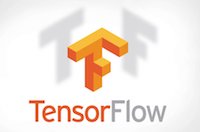Python Deep Learning Frameworks (1) - Introduction

Introduction
What I can say about deep learning that hasn’t been said a thousand times already? It’s powerful, it’s state-of-the-art, and it’s here to stay. But you already knew that. So instead of polluting the Web with yet another post about the prowess of deep learning or how it works, I’m going to focus on its application. Specifically, through a series of upcoming posts, I’ll look at three of the leading Python deep learning frameworks - PyTorch, TensorFlow, and Theano - and assess them on a number of dimensions, including:
- How easy are they to setup?
- How useful is the documentation?
- How is the quality and breadth of the tutorials?
- What is the learning curve like?
- Are there key performance differences between the frameworks?
I’ll wrap up the series with a full buildout in each framework of a deep reinforcment learning project, but more on that to come in the future.
Objective
The objective of this post is simply to introduce the three frameworks and to provide a roadmap for future work.
The Deep Learning Frameworks
The three deep learning frameworks that I’ll investigate are:
- PyTorch
- TensorFlow
- Theano
Let’s begin by looking at a brief description of each framework.
PyTorch (version 0.2.0)

According to PyTorch’s website:
PyTorch is a python package that provides two high-level features:
- Tensor computation (like numpy) with strong GPU acceleration
- Deep Neural Networks built on a tape-based autograd system
You can reuse your favorite python packages such as numpy, scipy and Cython to extend PyTorch when needed.
At a granular level, PyTorch is a library that consists of the following components:
- torch a Tensor library like NumPy, with strong GPU support
- torch.autograd a tape based automatic differentiation library that supports all differentiable Tensor operations in torch
- torch.nn a neural networks library deeply integrated with autograd designed for maximum flexibility
- torch.optim an optimization package to be used with torch.nn with standard optimization methods such as SGD, RMSProp, LBFGS, Adam etc.
- torch.multiprocessing python multiprocessing with magical memory sharing of torch Tensors across processes; useful for data loading and hogwild training
- torch.utils DataLoader, Trainer and other utility functions for convenience
- torch.legacy(.nn/.optim) legacy code that has been ported over from torch for backward compatibility reasons
TensorFlow (version 1.2)

According to TensorFlow’s website:
TensorFlow is an open source software library for numerical computation using data flow graphs. Nodes in the graph represent mathematical operations, while the graph edges represent the multidimensional data arrays (tensors) communicated between them. The flexible architecture allows you to deploy computation to one or more CPUs or GPUs in a desktop, server, or mobile device with a single API. TensorFlow was originally developed by researchers and engineers working on the Google Brain Team within Google’s Machine Intelligence research organization for the purposes of conducting machine learning and deep neural networks research, but the system is general enough to be applicable in a wide variety of other domains as well.
Theano (version 0.9)

According to Theano’s website:
Theano is a Python library that allows you to define, optimize, and evaluate mathematical expressions involving multi-dimensional arrays efficiently. Theano features:
- tight integration with NumPy – Use numpy.ndarray in Theano-compiled functions.
- transparent use of a GPU – Perform data-intensive computations much faster than on a CPU.
- efficient symbolic differentiation – Theano does your derivatives for functions with one or many inputs.
- speed and stability optimizations – Get the right answer for log(1+x) even when x is really tiny.
- dynamic C code generation – Evaluate expressions faster.
- extensive unit-testing and self-verification – Detect and diagnose many types of errors.
Summary
Three of the leading Python deep learning frameworks - PyTorch, TensorFlow, and Theano - were introduced. In upcoming posts, I’ll assess each on a number of dimensions including: ease of installation, usefulness of documentation, quality and breadth of the tutorials, how steep the learning curve is, and if there are key performance differences. Lastly, I’ll conclude this series by building out a deep reinforcement learning project in each of the three frameworks.
Next Time
I’ll walk you through the installation process of each framework and compare the relative ease or difficulty of getting each setup.
